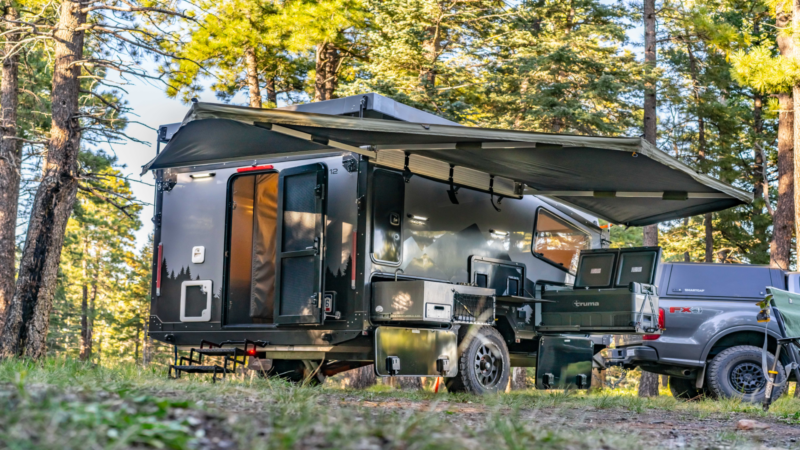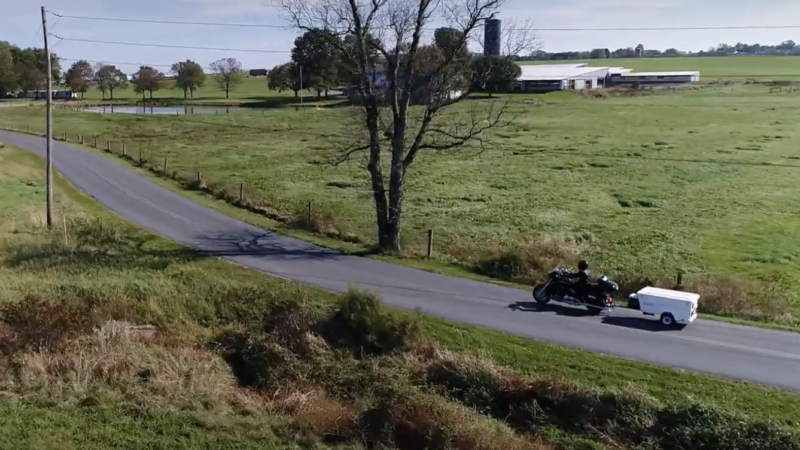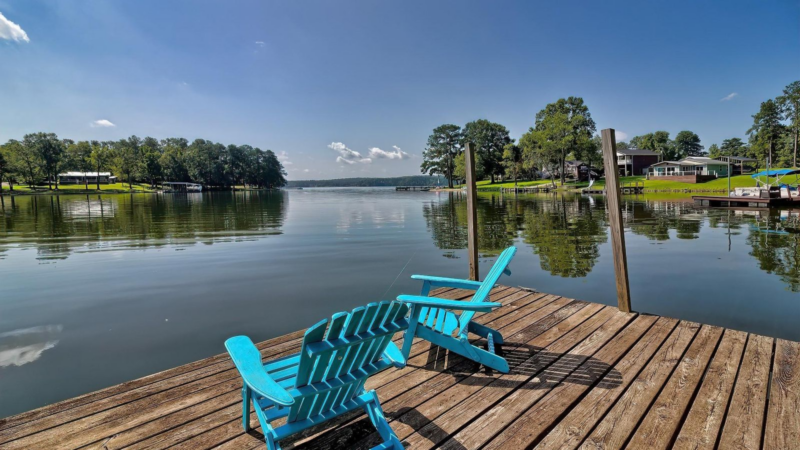Flex Armor | I Heart RVing

RVing raises the roof on your adventures. It takes you into nature and provides an entirely new outlook on what it means to see the world around you. Yet it still provides all (or at least) most of the comforts of home—especially a roof over your head. Keeping that roof in good repair is vital to your comfort and safety wherever your travels take you. That’s why RV roof repair is so important: it prevents costly water leaks, damage, or bringing the roof over your head down.
Fortunately, with a little forethought, you can protect your roof’s integrity and continue enjoying your adventure. With the right materials, you may even end up with a better roof.
RV Roof Repair: What to Watch For
Look up. Do you see any changes in the coloring? Are there cracks? Wrinkles? How does the caulk look?
If you want to avoid having to raise a new roof, you’ll need to catch potential roof issues before they become problems. Regular inspections (such as before and after trips or at the start of each new season) can help you catch problems early.
A healthy roof looks smooth and flat with no cracks or tears in the roofing material. If you have an EPDM (ethylene propylene diene monomer) rubber roof, you want it to remain white. The roof material itself has a black underlayment and is covered in white. If the white wears away due to UV exposure or time, the black can start to show through. This is a clear sign that you need to invest in RV roof repair or possibly replacement.
Other common RV roofing materials include TPO (thermoplastic polyolefin) and vinyl. Watch out for any wrinkles, as they can indicate water has seeped into your roof. If the cotton backing gets wet, it can hold in the water, which can then cause the wood to rot. Some wrinkles are common in both these types of roofs. However, they are typically in a straight line along the plywood.
Fiberglass is another material often used in RV construction. When inspecting your RV, watch for white streaks and small spider cracks. Fiberglass is covered with a protective gel coat. As this material deteriorates, the fiberglass is exposed and can start to streak and crack.
To ensure the long-term health of your RV, you’ll also need to watch for holes or tears in the rubber. This layer is important for protecting your roof and maintaining the integrity of your home on the road.
The biggest offender that leads to potentially costly RV roof repairs is old or damaged caulking (or a subpar caulking job to begin with). So, job #1 is to inspect the caulk on the roof (and anywhere else) and ensure there are no cracks and it isn’t becoming discolored. Once the caulk dries out and cracks, a leak becomes inevitable.
Fortunately, self-leveling sealant (the most common one is made by Dicor, which is compatible with EPDM) is a fairly easy fix—as long as you catch it before damage is done. This product stays soft and supple and is easy to use.
Remember, regular inspection is your best way to find and address problems early before they result in costly repairs.
How Bad Is Your RV Roof Repair?
If you find cracks, wrinkles, or other telltale signs of wear after you’ve inspected your roof, you’ll want to determine the extent of the damage. For instance, does the overall condition of the roof look good? But there’s some wear in the caulking? If so, a rubber conditioner or silicon coating can be an effective fix to help prolong your roof’s lifespan.
Unfortunately, if you are already seeing signs of water damage, you’ll need to act quickly to prevent further damage and potentially need to replace rather than repair your RV roof. Luckily, there are several options to consider when dealing with RV roof repair.
RV Roof Repair Products
For minor issues (especially if you are a do-it-yourselfer), a rolled-on silicon or rubber coating can safely preserve the existing material. Liquid Rubber, Hengs, and other rolled-on options can be found at your local RV store or online.
Before patching even small membrane holes, though, with products like EternaBond tape, make sure the wood underneath is dry.
Unfortunately, larger holes or soft spots could call for roof replacement rather than RV roof repair. You’ll want to address the problem properly to prevent larger (and more costly) issues down the road.
When it comes to replacing the roof membrane, the common approach is swapping it with the same type at any RV service center or dealership. This method may not fully correct all concerns, though. Another option is aftermarket installations, which are usually done more carefully than factory installs.
The biggest issue is that they can take time, which keeps you off the road. The costs can also add up, especially if you’re far from your home base or RVing full-time.
That’s why it’s so important to regularly inspect your RV, including the roof.
A More Permanent Solution? RV Roof Replacement
There’s only so much you can do with regular maintenance. Eventually, you may need to find a more permanent fix. One of the simplest solutions is a sprayed-on RV roof.
Spray-on products like FlexArmor can address common RV roof issues. They’re designed to remove caulking seams, provide greater durability, enhance insulation, and protect your RV roof for years. FlexArmor RV roofs reportedly create a strong seal that lasts a lifetime. (In fact, FlexArm guarantees no more leaks, no maintenance, and no worries.)
RV Roof Repair or Replacement Takeaways
Regularly inspecting and keeping your RV roof in good repair is vital to your comfort and safety. It prevents costly water leaks, damage, and prematurely detouring your travels as you wait for repairs.
Yet, with a little forethought and the right quality products, you can help protect your RV roof. You may even end up with a better roof that will protect you over miles and miles of adventures!






